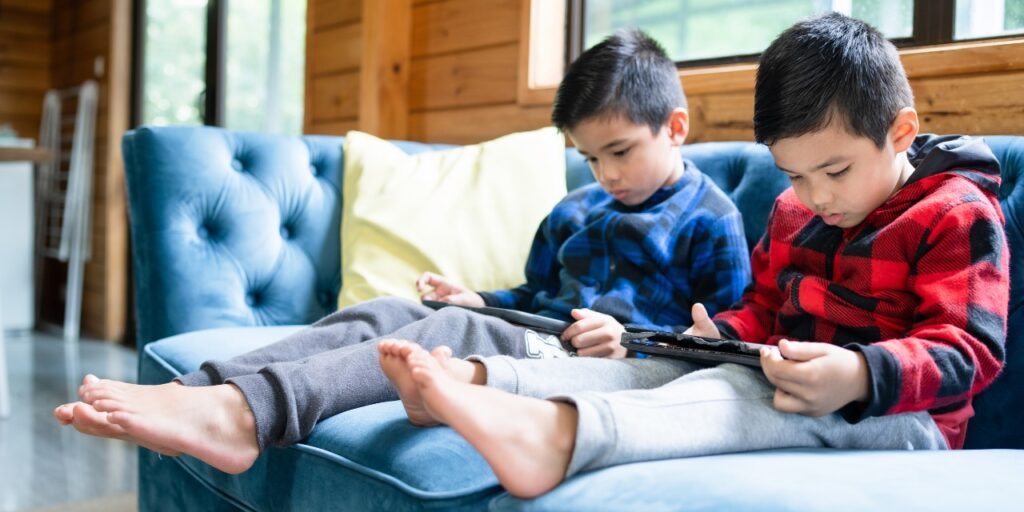In today’s digital world, screens are everywhere—from smartphones and tablets to TVs and laptops. While some screen time can be educational, too much of it can negatively impact a child’s brain development, behavior, and learning ability.
In this article, we’ll explore how screen time affects brain growth, what the science says, how much is too much, and tips to manage healthy screen habits at home.
🧠 How Screen Time Affects Brain Development
The early years of life (0–8 years) are critical for brain wiring, emotional control, language skills, and social development. Excessive screen time during these years can interfere with:
- Attention span
- Language development
- Sleep patterns
- Emotional regulation
- Cognitive growth
Let’s dive into the specific effects:
1. Delays in Language and Communication
Passive screen viewing (like watching cartoons) doesn’t engage children in two-way conversations—essential for developing speech and vocabulary.
🧠 Fact: Studies show toddlers with more than 2 hours of daily screen time may have language delays.
2. Reduced Attention Span
Fast-paced animations and constant switching stimulate the brain unnaturally, leading to shorter attention spans in real-life tasks like reading or focusing in class.
3. Disrupted Sleep
Blue light from screens suppresses melatonin, the hormone that helps kids sleep. Poor sleep can affect brain development, memory, and emotional health.
4. Impaired Social Skills
Excessive screen time limits face-to-face interaction, reducing children’s ability to:
- Read facial expressions
- Build empathy
- Communicate effectively
5. Lower Academic Performance
Overuse of screens often means less time spent on reading, outdoor play, or creative tasks, which are vital for cognitive development and school readiness.
⏰ Recommended Screen Time by Age (As per WHO & AAP)
| Age Group | Daily Screen Time Limit |
|---|---|
| 0–2 years | No screen time (except video calls) |
| 2–5 years | Max 1 hour of high-quality content |
| 6–12 years | Max 1–2 hours (excluding school-related use) |
| 13+ years | Balanced use with emphasis on sleep, study, exercise |
👍 When Screen Time Can Be Beneficial
Not all screen time is harmful. The quality of content and how it’s used matters.
✅ Healthy Screen Time Examples:
- Educational videos and apps
- Interactive games that promote learning
- Virtual storytelling sessions
- Guided language learning apps
👪 Tips for Healthy Screen Habits at Home
- Be a role model – Practice balanced screen habits yourself
- Set screen-free zones – No devices at the dinner table or in bedrooms
- Use parental controls – Monitor and filter content
- Co-watch and engage – Ask questions, talk about what they watched
- Encourage offline activities – Reading, art, puzzles, outdoor play
- Follow the 20-20-20 rule – Every 20 minutes, look 20 feet away for 20 seconds to reduce eye strain
🧠 Screen Time vs. Brain Development: Summary Table
| Effect Area | Too Much Screen Time | Balanced/Quality Screen Time |
|---|---|---|
| Language Skills | Delayed speech and vocabulary | Boosts when used interactively |
| Attention Span | Shorter, easily distracted | Can improve with guided use |
| Sleep | Poor sleep due to blue light | Better with screen-free bedtime |
| Social Interaction | Reduced face-to-face skills | May support learning through video chat |
| Academic Performance | Lower focus and grades | Neutral or positive if well-managed |
📌 Final Thoughts
Screens are a part of modern life—but how and how much they’re used makes all the difference. As a parent, your role is to guide, set boundaries, and balance screen time with real-world learning to support healthy brain development.

